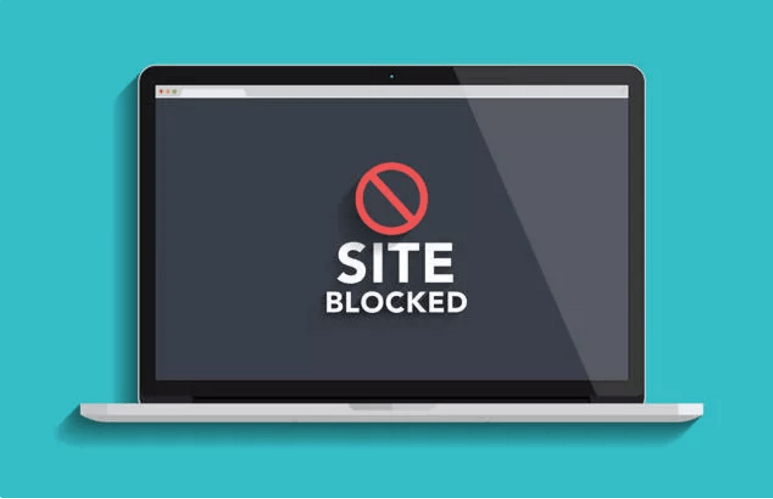Various countries began to closely monitor the behavior of their citizens on the Web, also blocking of various sites. Let’s leave aside the causes and consequences of such actions. This article is exclusively on how to gain access to website resources you need the most.
There are a lot of technical ways to bypass website blocking, but we will focus on those that are understandable to ordinary users and easy to repeat.
The most popular ways to bypass any blocking, is the use of proxies and VPN. In the proxies case, you will need to properly configure your browser or add the appropriate extension. And for VPN, there is often a special comprehensive software, which can be installed on your PC, smartphone/tablet and even router. Then all programs on the device will work normally, but through a special secure tunnel.
Blocking technologies may differ from country to country, e.g. in China there is the Great Chinese Firewall. But mostly the following measures are applied:
- Appeals and claims to hosting companies, on whose servers problem sites are located, sanctions against hosters;
- Traffic filtering by communication providers;
- Internet portals registration denial;
- Other administrative measures.
If we talk about all the available technical methods of traffic control, there are many. There are both common, that is, well-established, available in the implementation for most, and very sophisticated, designed more for geeks and specialized technicians.

Popular ways to access a blocked website
- Internet Archive. An independent service that does nothing but create “snapshots” of all sites on the Web. Again, the service’s robots do not bypass every site and sometimes “very rarely”. Here you can see only the history of changes to a particular web-resource. The archive is often overloaded, it is worth using only for certain tasks. It will be of interest mostly to journalists, marketing and SEO-specialists.
- Server Proxies. These are the network nodes that can be used to bypass blocked sites. Both paid and free proxies have low security. But they work effectively because they are usually located in data centers. We will tell more about them below.
- Google caching. The content of indexed sites can often be seen without having to go anywhere. Google stores content on their own, on special servers – cached pages to speed up the work. True, not all sites are cached and the viewed content may no longer be the most relevant.
- Resident and mobile proxies. Everything is more complicated here. Not dedicated high-performance servers in data centers are used as reference points, but the end-user devices: PCs, notebooks, routers. Mobile proxies are also a kind of resident proxies, but they operate on mobile devices and therefore, due to the peculiarities of the architecture of mobile communication providers’ networks, have a higher degree of trust. The traffic is not as fast as the server proxies, but their purpose is also different. Usually it is for marketing purposes.
- Browser extensions to bypass blocking. In fact, they are add-ons for automatically redirecting traffic through classic server proxies. If it is an add-on of a particular provider, then the proxies will be theirs. Traffic of such add-ons is usually not encrypted (due to peculiarities of API of browsers).
- Public DNS servers. The most prominent examples: Google or Cloudflare DNS. There are also many others. Their main task is to automatically filter traffic. Blocking bypass is a side effect and does not always work, since the largest ISPs cooperate with the RCN.
- Onion routing and Tor networks. Bypass routes are built through the devices of users who have expressed a desire to participate in the development of the project. The network is flexible and almost guaranteed to find access to the desired site. But the speeds here are understandably low, as well as the stability of the connection.
- VPN services. Usually it is a ready infrastructure based on powerful servers in different parts of the world. Data is encrypted and transmitted in unreadable form. This is probably the best way to get to a blocked site for ordinary users who need speed, privacy and a guaranteed channel.
If we pick the best method by the optimal combination of reliability, simplicity, privacy and speed, the strongest contender remain: VPN services.
How to bypass a blockage with a VPN
A VPN is a virtual network that is set up on top of an existing open (public) network. This is done through encryption. That is, the data itself is transmitted over the same networks, but in a way that it cannot be read or otherwise reproduced.
When you use a VPN, the content of your traffic can neither be seen by your ISP, nor by local network users (with the help of so-called sniffers), nor by anyone else. The data leaves the computer encrypted, and is decrypted only on the side of the VPN provider’s servers.
VPNs can also be paid and free. Using free VPN services is not a good idea. The principles are the same as with proxies. You can’t build and maintain a quality infrastructure without investment.
Since encryption is used on the final device, you will need special software. A universal algorithm to bypass blocking with a VPN will look like this:
- You download the software client for your platform (Android, iOS, Windows, Linux) and install it on your device.
- If necessary, authorize in your account (it usually refers to paid services, some free services can work without authorization).
- Connect to the desired location (if your provider has such an option) or just enable encryption, if there is no choice.
- Done, now all your data is closed from prying eyes, and you can go to any site (again, if your VPN provider does not filter sites from the Unified Registry).
All modern operating systems are able to connect to VPN services directly without special software, provided that the encryption algorithms are compatible with the pre-installed modules in the system.
To do this, you must specify:
- Connection type (encryption algorithm);
- Server address;
- And other parameters declared by the selected VPN service.
Conclusion
There are various ways to access a blocked site. Many of the options we have listed do not require additional costs, but they do not guarantee anything either. It’s up to you to use them or not. In some ways you will need specific knowledge, while in others there are many different downsides.
If your data security is your priority – VPN is your 100% pick.

